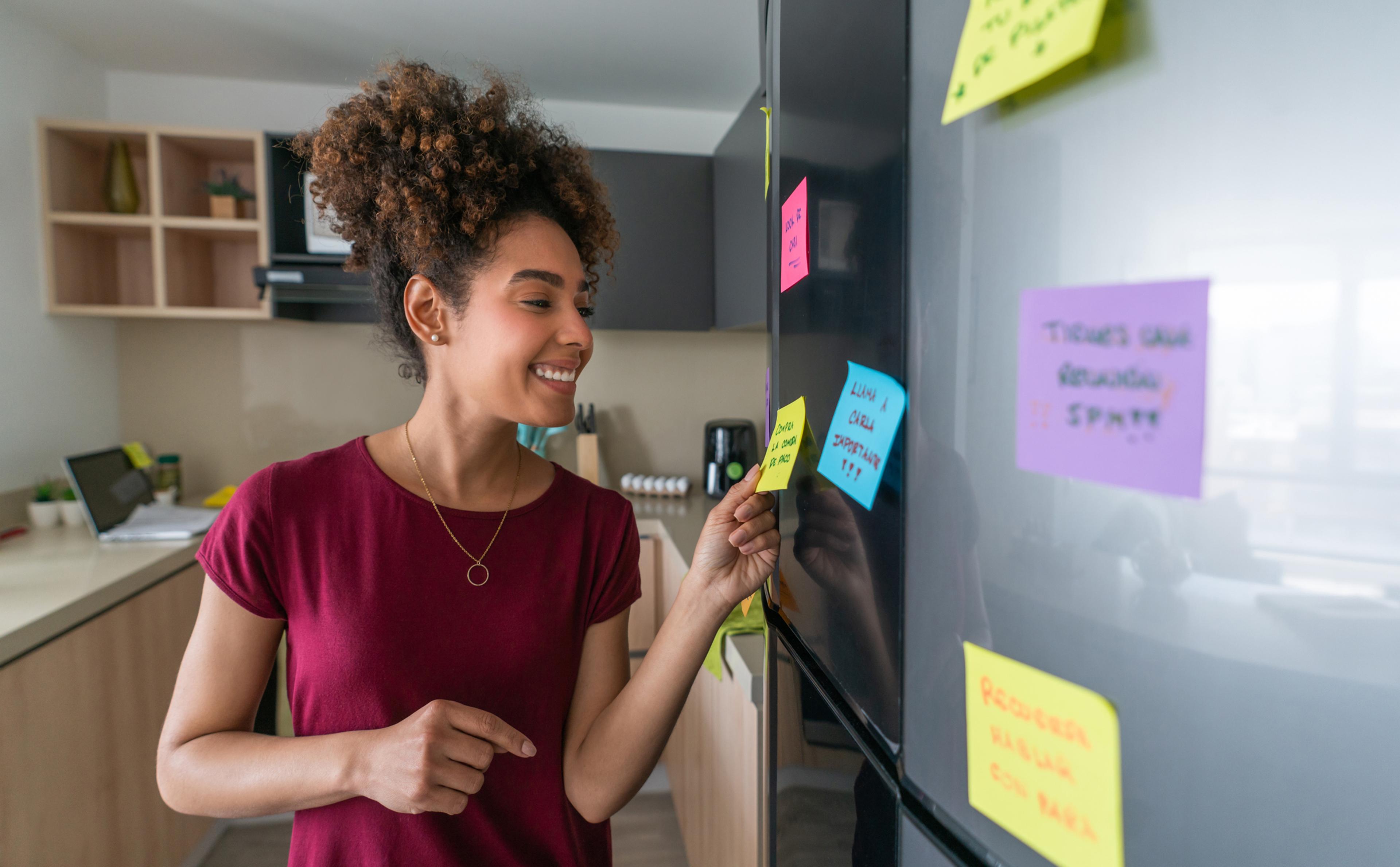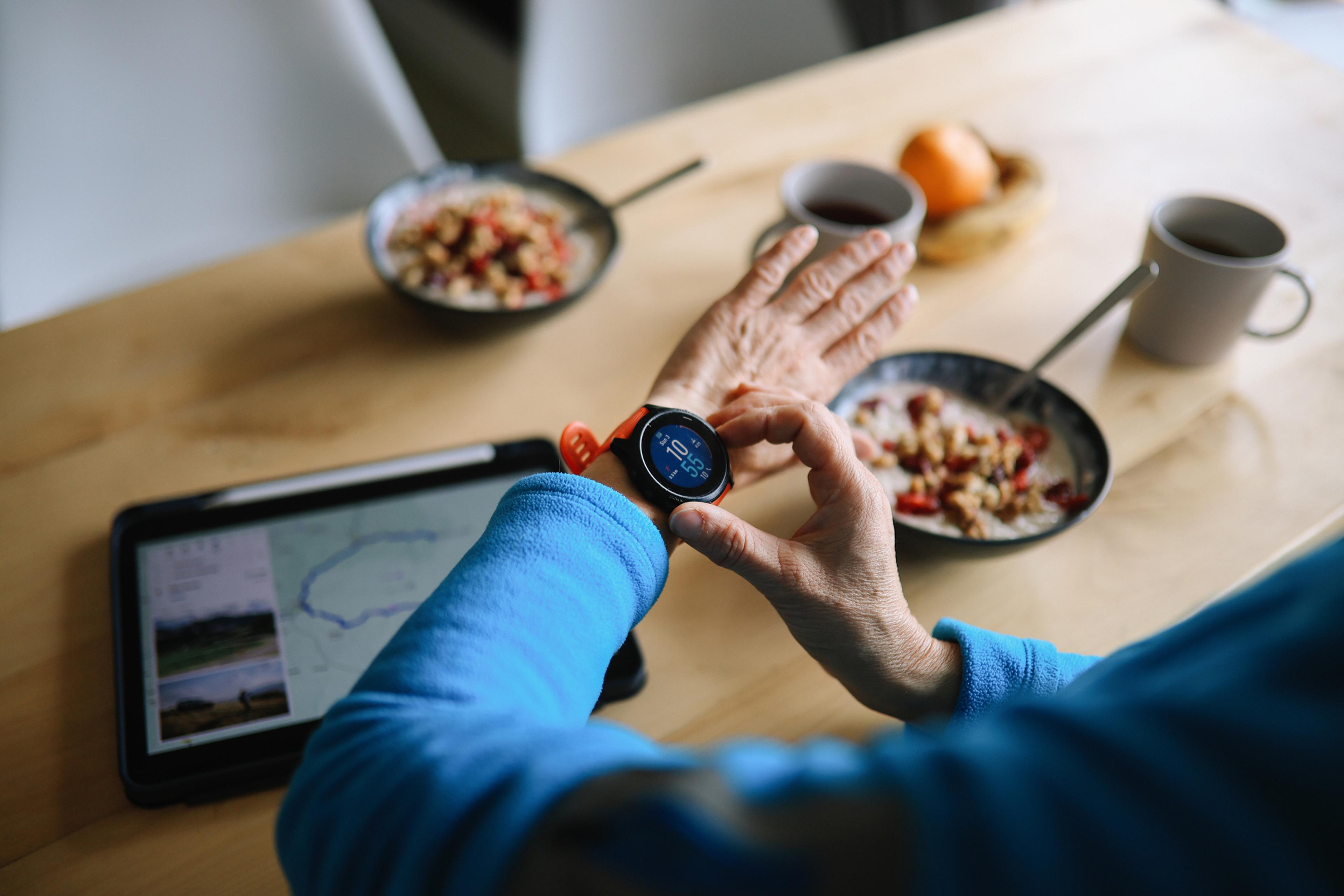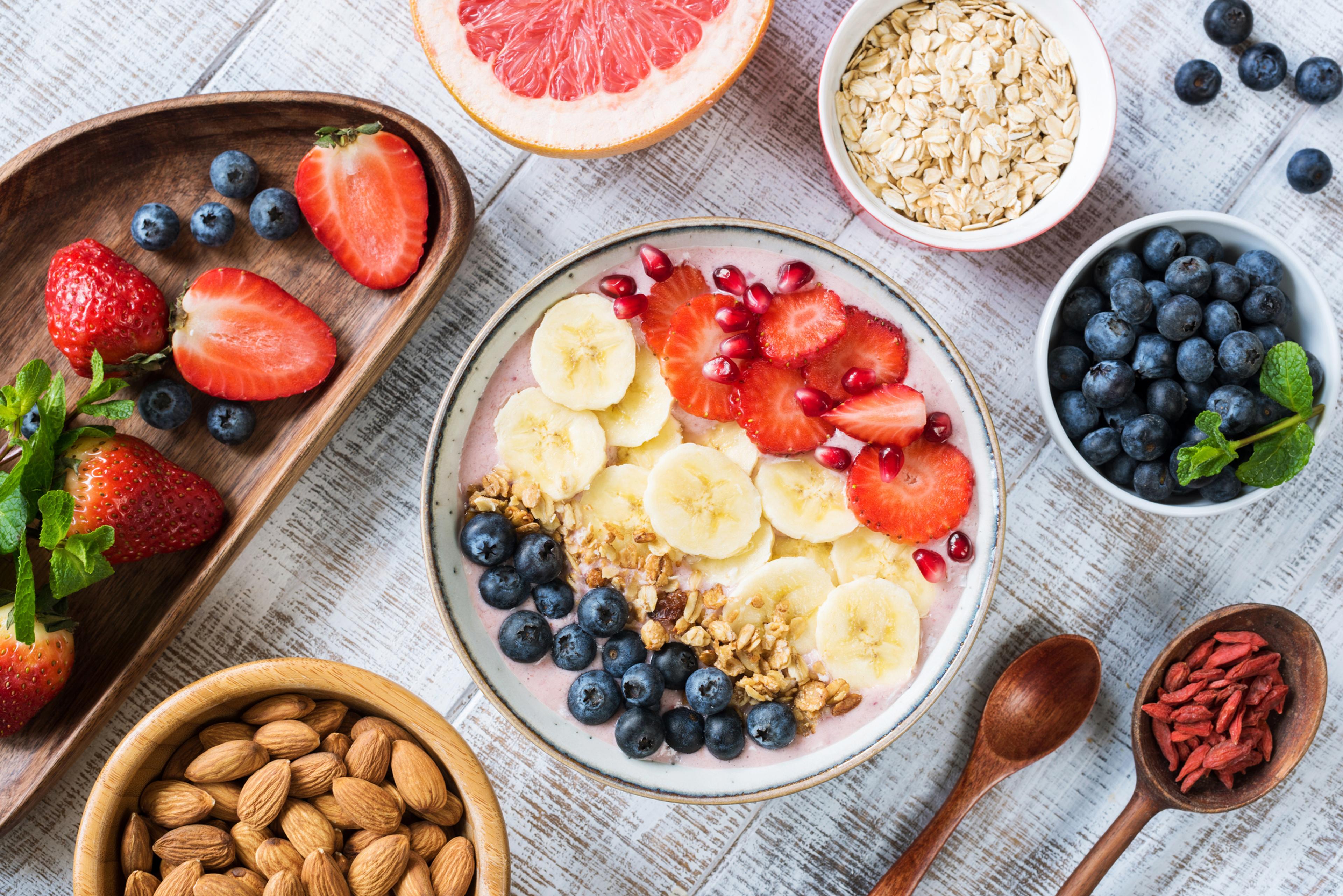Hacks to Improve Your To-Do List

00:00
00:00
About the Show
- How effective to-do lists can positively impact your wellbeing
- Aspects of creating an effective to-do list
- Tools to help streamline to-do lists
- Strategies to help prevent to-do lists from becoming overwhelming
Transcript
Here is the full transcript of this episode. You can listen to the audio version on streaming platforms or watch on YouTube.
We've all created a to-do list before, but is there a better way to prioritize what's on it or make sure everything gets accomplished efficiently? How do they correlate to positive well-being? This is A Healthier Michigan podcast, episode 156, and coming up we discuss hacks to enhance how we create our work to-do lists.
Angela Moore:
Thank you so much. I'm happy to be back.
Chuck Gaidica:
And this idea of creating hacks to prioritize, for many of us, this just seems like it comes naturally, right? Sometimes creating a to-do list though can feel like a process in itself. It's another thing to do amongst the things to do. Some tasks are urgent, some of them can wait, some don't take much time to complete, others take a lot longer. So for many of us, it can be difficult to figure out how to prioritize which color post-it. Whatever your system is the one that you're going to tackle first thing today. So when it comes to creating a to-do list, is there a more effective way is the big question to write and organize our lists to maximize how tasks are completed? Is that a good place to start? How do we start this whole thing?
Angela Moore:
Well, it's interesting. I actually don't like the phrase to-do list. I almost like to say goal list or get to-do list and notice, I said get to-do. Because sometimes when we think about to-do, it's something that we like we have to do. And so we kind of make it almost a negative theme the minute we start listing the tasks that we're trying to accomplish. And so I think if you think more goal oriented, what is it that I want to accomplish today? What is it that I want to accomplish over the week that's going to allow me to get closer to the things that I'm trying to accomplish in my business, in my personal life? Just an overall, and I'll say an overall well-being because oftentimes some of the things that we put on our to-do list have a lot to do with the things that we're trying to accomplish as it relates to our health. And are we seeing those things that are on the list as almost as things that we don't want to do that we have to do and we're reluctant to do them? Do you understand what I mean?
Chuck Gaidica:
I do. And I think it's interesting because your skill sets and the reason I called you a ninja warrior because you're a trainer, you're a coach, but you're also a licensed therapist. So this idea of well-being becomes important, although to be fair on our go get it done or go get a to-do list, we may have working out or training or getting a coach, that may be on the list. But I think if we focus on the well-being, why is it important that we connect getting things done with our wellness?
Angela Moore:
Yeah. Well because how many times have you woke up with the intention of getting some things accomplished and not accomplished half of those things or some of those things that you woke up with the intention to do? And then at the end of the day you feel guilt, shame, conviction because you were not able to accomplish the things that you wanted to do. Sometimes you even feel like you failed. And so it can have a very negative impact on your mental health and overall well-being, and that's why I like kind of a more goal oriented approach because if you see it as goals, if you're not able to necessarily accomplish the goal for different reasons, you often look and say, "Okay, what is it that I didn't do or I need to do more of that's going to allow me to accomplish the goal?" Whereas when you say to-do, and then if you didn't do it, you tend to feel like you messed up, you made a mistake, you failed.
Chuck Gaidica:
Well, for some of us isn't getting half of the things done something to be grateful for because there are people walking around who maybe just got a quarter of the things or none of them done. So actually offering yourself, I don't know how to look at it, is grace, or maybe is the cup half full or half empty kind of perspective? Can you shift your thinking so that even getting half of your list done is a good thing?
Angela Moore:
Most definitely. And that's why I say if you just rephrase it in terms of get to do as opposed to have to do, it automatically puts you in a spirit of grace and graciousness and a thankfulness that you get to do the things on your list. And so if you're not able to accomplish, as you mentioned, half of the things on your list, you don't feel a sense of failure as much as you may look back and reflect and say, "Okay, what is it that I need to do better that's going to allow me to accomplish my goals?"
Chuck Gaidica:
So before we get into some of the hacks, let's dig in a little deeper on this idea of mental health. So where have you seen with clients or even in your studies, this idea of creating an effective go get it done list and how does that affect people's mental health?
Angela Moore:
Well, it affects your mental health, one, it can affect your mental health in a negative way if you go in with the wrong mindset. And so a large part of what we've already been talking about is what I try to recommend to my clients and the people who seek my services for support is that when we wake up, it's an opportunity, another day to accomplish some really great things. And if you can look at it from that perspective, you're going to start your day in a very positive way anyway. And when you're trying to accomplish certain things if you... the one thing I like about to-do lists or get to-do lists is what you're doing is you're putting down what it is that you're trying to accomplish in writing. And then what it does, it almost becomes like a vision, a vision for your day, a vision for your week.
And do you see how I am kind of changing the way that we're looking at it? And so if you look at it from that perspective and you are prioritizing the things that you want to accomplish the most and you're doing those things, say maybe what I recommend at the beginning of the day, the minute you do that main thing, that most important thing that you wanted to do, it's going to typically give you some momentum to continue to accomplish the other things that you have on your list. So it can have a very positive impact on your well-being, but it starts with a positive mindset about the items that you're going to be listing and prioritizing.
Chuck Gaidica:
And isn't it good for us to remember that feeling, whether we're literally getting a high five or whether we're just giving it to ourselves because really only one's home at that moment, we accomplish something, we got it off the list to go get it done and we got it done. I don't know, focusing on that feeling is something good because it just kind of reinforces, "Well, I've had this feeling before." It feels really good to get that stuff off the list, right?
Angela Moore:
Yeah. And that's why it's so important to be mindful of what you're putting on your list. And so one of the things that I recommend when you're creating the list in addition to prioritizing the top things that you're trying to achieve to make sure that they're relevant to the time where you are in your life and what it is that you're trying to accomplish. In a simple way of putting it, right now we're going into the warmer months, and so it may be to your advantage to list things that apply to this time of year as opposed to listing things that may be months away.
And the one thing about... And you'll appreciate this, depression is when we look too far behind or we tend to focus on things in the past and anxiety is when you focus too far in the future. And so whenever you're creating your list, just like anything, I'd recommend that you're going to do it presently. So what is it that you're trying to accomplish at this present moment, at this present time in your life? And by that, when you are listing the things that you're trying to accomplish right now or in the very near future, it's going to be relevant to what you're trying to do at this time as opposed to later or as opposed to something that you can't change in the past.
Chuck Gaidica:
So what aspects of this go get it done list, do you think make up an effective list beyond what you just talked about? Which is important because I would not really have thought overtly about the context of the weather of the what is my physical health. I mean... And you're talking about this in the sense of goals. So we all know using smart goals, if it's not achievable, be careful unless you're in Nyad and you're going to swim from Cuba to Key West and you know can get it done somehow. But I mean short of those gargantuan goals with somebody who's really special, be careful that you don't put something on there that's just going to take you out at the knees, right? That's another part of this.
Angela Moore:
Yeah. Yeah. And keeping that in mind, what you just said, it's really important, one, like I said, to be mindful of the goals that you're listing but also categorizing those goals. And one of the things that I truly recommend is that you create time and space to create your to-do list, your goal list. Because sometimes what happens, and oftentimes what I find is when people are creating traditional to-do list, they're kind of doing it as they're doing other things. So throughout the day they may... in the past we'd have a piece of paper where we're writing things down that we don't want to forget to do. Now we're using a lot of apps and we can talk about that in different things. We may type up some things on the computer as we're working. The only problem with that is just kind of like you're putting things down as you're doing other things, as opposed to saying, "I'm going to plan on a Saturday morning to list the things that I want to accomplish for the upcoming week."
And then looking at that list and saying, "Okay, what are the things that I need to list first? Because maybe those things are going to require more time and energy, more mental clarity, more focus, more time." And as you're listing the different items that you're trying to accomplish, looking to see which of those items are related so that for instance, I may have a number of things that I have on my to-do list, my goal list that I can accomplish in my office. And so when I'm in my office, I'm going to list all the things that I want to accomplish while I'm in my office where the next category, maybe things that I'm going to be shifting to that have more and more related to my personal life. And so maybe those are things that I'm going to be doing in a different area of my house or maybe outside.
Maybe there are things that I'm going to be doing once I've left the house. But do you see how if you have thought about those things ahead of time, one, you can organize your schedule based on that. You can organize where you're going to be driving and how you're going to get there and the time that you allocate for that because you've already thought about the things that you're trying to accomplish. So you're not going from here to there to there all over the place. You actually have an order to the things that you're doing so that you're able to accomplish them in an efficient and effective way.
Chuck Gaidica:
That's so cool to think about streamlining even your lists, because I suspect that while and in your practice, I don't know what percentage is physical fitness, mental fitness, but when you think of mental fitness, if you're living in a world of chaotic thought or you're living in a house that's disordered where every single countertop is cluttered, you could get stuck, right? You kind of look at it like, "Oh my gosh, it's such a gargantuan thing," but streamlining the list to make it doable to actually be able to get it done would seem to me to really give you some freedom in your thinking, giving you clarity, not just the winds that come along with getting it done, but also that idea that you're just not surrounded by chaos. Am I right?
Angela Moore:
Yeah. Well, and I love the way that you use the items in a room. If you had things like chaotically placed throughout a room, it makes you feel chaotic. The same would apply to a list. If your list is all over the place, it's going to be very difficult to organize your actions and also to arrange your thoughts so that you're going to be able to think in a very productive way and that you're going to be able to accomplish the things that you're trying to accomplish.
Chuck Gaidica:
Yeah, I am married to an organizational expert. She's not only good at puzzles, Angela, she's good at packing a car for a vacation, but she uses her phone and literally on her calendar, she'll hold her thumb and it lights up and she's moving these little tiny bar like things. I'm like, "What are you up to?" "Well, I've got to get these things done today," and she's moving them back and forth. That's her hack. That's the way she keeps track. I'm a little bit more old-school, right? I'm going with paper notes or something. But regardless, what do you suggest that we start to think about hacks is maybe a good way to look at them, but to enhance our productivity and organization skills. Because for some people that electronic thing works. For some, they're like, "Oh, I don't even get it anyway. So that's just another thing to clutter my mind."
Angela Moore:
Well, I would say that you kind of hinted as to what is the solution, do what works for you. So if you've never used apps or the computer or a calendar on your phone to organize your to-do list your goal list, then that's probably going to be very stressful to you to start doing something that you've never done and you may not have to. Your life may not require you to get an app. Maybe the things that you want to do or you get to do are things that are easily accomplished and that can be easily jotted down on a piece of paper. However, for a lot of us, we are trying to manage a lot of different things, and we are often on our computers and we can use apps on our computers and on our phones to our advantage. There are many different ones.
Some of the top ones are going to be like Monday.com, Twello is another one. And they allow you to arrange and better organize the things that you want to do and actually monitor your progress so you can see those things that are urgent, those things that you have started, things that are progressing, things that are done. So it really does help you kind of organize your thoughts, organize the things that you're trying to accomplish, as well as monitor your progress as you are checking those things off the list. And so those tools can be very effective as long as you don't let it become something that's overwhelming.
Chuck Gaidica:
Yeah. Sometimes I have to admit this, I fall in and out of the idea of journaling. Sometimes I'm good at it for a season and sometimes I'm not. And as I was thinking about our conversation today, I thought getting your goals and your go get it done list together is almost the prequel to part of that idea of journaling in the future. Because part of journaling is what's happening to me now, what's going to happen in the future, how I'm feeling. But part of it is in the rearview mirror, how what I did in recent past made me feel great or I'm grateful for it or whatever. And I thought that's a good way for me to look at getting things done is to almost reverse engineer what am I looking to feel like or want to get done and get back to the prequel of actually go getting it done. And for me, I'm thinking, "Well, that may be a good hack for me to think of it in those terms."
Angela Moore:
And so are you saying that that's something that you often do, you often do moments of... it sounds like moments of reflection where you look back at the things that you were able to accomplish?
Chuck Gaidica:
Yeah, it's not so much I'm visualizing, although I guess that's part of it. There's so much interesting stuff that's woven into this idea. It seems so simple, but even people who use vision boards, I mean, in essence, if you're going to have goals and get it done list, you could be a person where your hack is just you are good at envisioning, seeing through the walls, getting it done, and then it gets done. Well, that's great if that's your thing, right?
Angela Moore:
Yeah. Well, that's why you probably recall that I mentioned it at the very beginning of our conversation today is that when you are writing down those items on your list, to me it's like writing down your vision. And we tend to think of vision in such a big way like my vision for my life. But your vision is literally what is your vision for today? That by the time I'm done, at the end of the day, I feel great about the things that I accomplished and the things that I didn't accomplish, I don't associate with my value or my worth as much as I say, "Okay, those things that I was not able to accomplish, I get the opportunity tomorrow to try again and now I'm smarter, I'm better. I learn more, I acquire more information."
Whatever it was that you decided to do with your day, you are a smarter version of yourself. Anyway, because even if you had a horrible day and say it was one of those days where you're like, "I wish I could have just slept through that day," and we've had days like that where it seemed like one thing after other just didn't go well. But even in those days, we're able to learn something from it. We always are able to learn something even from those days that are not so good that we can use, we can take that information and try to make the next day a better day.
Chuck Gaidica:
Well, and coming back to that idea of grace, when you have a bad day, many, many times, it's not really your fault. It's not your deal whether you've got kids running around or the dog got sick, I mean, goodness knows the job called and said, "You need to work harder on this project." Sometimes we get swamped and it's got nothing to do with being a slacker or that you can't accomplish goals. It's just that life happened.
Angela Moore:
Yeah. And on those days where you have a lot of things coming in, it's okay if you've already created a to-do list or a get to-do list, a goal list whatever you want to accomplish... I mean whatever you want to call it, to say, "Okay, I have all these things that are coming at me. Let me write those things down and let me organize how I'm going to accomplish those things." And one of the things that I would recommend is whenever you write down what it is you're trying to accomplish, associate a time to it. The reason that I say that is because it's really a great thing to do is to, once you've written down something that you want to do and you've assigned a time to it, one, it's going to keep you focused.
So if you stay from three to four o'clock, "I'm going to work on this particular task," there's an increased likelihood that you're going to work on it from three to four o'clock. And if you get to four o'clock and you realize like, "Wow, I only got half of it done," if it's something you that you do often or that you do repeatedly, you may have to say, "Okay, do I tend to underestimate the amount of time it takes me to do something like this? Or do I overestimate the time?"
Chuck Gaidica:
That's interesting. Yeah.
Angela Moore:
Yeah. And then it's one of the things that they've also found is there's kind of a way of thinking that we can only really focus on a task for no more than an hour and 30 minutes. I've seen an hour and 30 minutes, I've seen even where some people argue 45 minutes. If you use the Pomodoro Technique, it's the concept that we work better at 25 increments, the Pomodoro being fit 25 minutes with a five-minute rest. And so one of the things that I do with my clients is I have them list the things that they do often and repeatedly and really assess how long it typically takes them to do those particular tasks. And then I ask them, "Okay, are you overestimating or are you underestimating? Because if you've underestimated, and let's say you keep saying to yourself, it only takes me 30 minutes to do this particular thing, but it always takes you 45 minutes, imagine how much stress you're going to keep producing because you're going to feel like I keep failing."
No, it's just that you're not allowing enough time. Like I am really slow. I am the slowest person getting dressed. I don't know why it takes me so long. I wake up many hours before I have to go somewhere, but I take a really long time to get dressed. I know that. So it's to my advantage to make sure that I allow myself plenty of time to get dressed and get going in the morning. It would not be to my advantage to say, "I can do it in 30 minutes," because that's not going to happen.
Chuck Gaidica:
Well, that's funny because now we're diving into self-awareness, which some people have, and some people it's a gift and others, I'm not quite sure where it disappeared. But there's that part and what you were saying about underestimating and overestimating, think of somebody who's in a sailboat. They know what tacking means. You're trying to stay on course, but sometimes you get a little off, so you correct that way and sometimes you correct that way. But that's really brilliant idea is to refine your notion of even the time that you're going to assign to a task. Because if you're thinking you're going to paint the house and you'll be done in 45 minutes, not going to happen.
Angela Moore:
And also I'll say too, it's really important as well to even when you're creating that list to make sure when you're creating it, that you're doing, so keeping in mind where you're going to be performing certain tasks. Because if you're trying to do a task and it requires a lot of mental focus, sharp focus, no distractions, it's probably not going to be to your benefit to do that particular task in a time when you're going to be distracted.
And so how many times as parents have we tried to do something that required our mental focus and the kids are running around and the kids are making noise and you're yelling at the kids, we're making noise when really you should not be doing that particular activity at that time. Really that time probably should be focused on the kids if they're there if you can, or you may need to move yourself to a different place so that you're able to truly focus and you probably would get that particular task done more effectively and efficiently once you've removed yourself away from the distractions, so even that's something to think about. It's the time, but also where you perform certain tasks so you can make sure you can do them in an effective way.
Chuck Gaidica:
So as we wrap it up, are there any other takeaways that you want to give us or just takeaways in general about this whole idea?
Angela Moore:
Yeah, I would say one, find what works for you, as we mentioned and we talked about briefly, you may be one of those people that to do your to-dos, it's better for you to list them on paper with your sticky notes that you mentioned, your different color code of sticky notes. I do recommend that you do have it where you can see it, because as I mentioned in one of our earlier conversations is that oftentimes when you don't see something, then it's forgotten about. So I love the idea of putting things out, and I've even found that that can be a negative of some of the apps that are on computers and on phones. It's because they're not necessarily where you can see them. So I actually recommend to my clients that you may put it on your electronic device, but also printed out. And then if you are going to be going to your phone, especially only look at your app to see what you're trying to do, be careful not to get distracted. Don't start checking emails and text messages and all-
Chuck Gaidica:
The dancing cat video could interrupt my getting things done. Yeah, probably.
Angela Moore:
Yeah. Because chances are you're going to get off track. And so I would say find one what works for you, but also recognize if the thing that you are decided to use as a tool to help you do that, make sure that you're using the tool appropriately.
Chuck Gaidica:
Yeah, good stuff. Well, it's really great to have you back, Angela. Thanks so much for all the wisdom.
Angela Moore:
Yeah, you're very welcome. Thank you so much for inviting me here today.
Chuck Gaidica:
Well, I'm sure we'll see you again soon, Angela Moore, who's a licensed therapist. She's also a master trainer and a coach, and just a whole lot of good stuff today for something that some of us may just take for granted in life right? We want to thank you for listening to A Healthier Michigan podcast. It's brought to you by Blue Cross Blue Shield of Michigan. If you like the show and you want to know more, you can check us out on our refreshed website, ahealthiermichigan.org/podcast. You can leave us ratings or reviews in the obvious places, Apple Podcast, Spotify. We've also got a YouTube channel. You can follow us on Facebook or Instagram or Twitter. You get new episodes, a lot of old episodes too, and you can carry them around while you're making lists right with your smartphone or tablet. Be sure to subscribe to us too on Apple Podcast or Spotify, or your favorite podcast app. I'm Chuck Gaidica. Be well.








